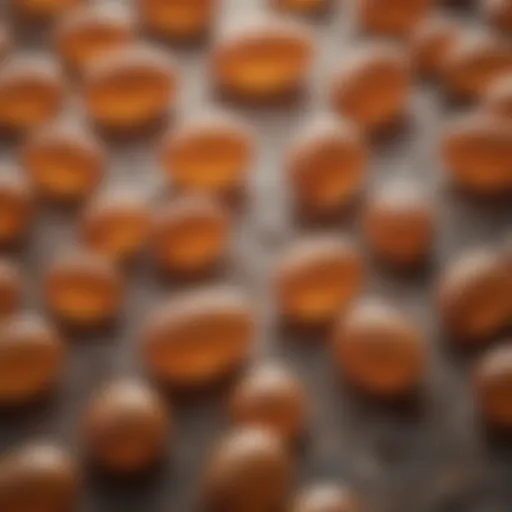Comprehensive DIY Termite Protection Guide for Your Home
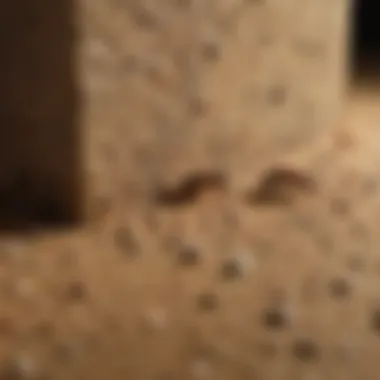

Preventive Pest Control Strategies
When embarking on the journey of DIY termite protection, the foremost step should involve implementing various preventive pest control strategies. Protecting one's household from potential termite infestations begins with fortifying the house exterior. Tips for sealing cracks effectively can entail using high-quality sealants and ensuring a thorough job to prevent any possible ingress points for pests. Additionally, clearing debris in the vicinity of the property is crucial to eliminate any potential termite habitats. The concept of preventing pests from entering the premises should be a top priority, involving the installation of barriers and screens to deter unwelcome intruders.
Moving forward, yard maintenance plays a pivotal role in termite protection. Investing time in essential yard care routines such as regular mowing, trimming, and removing stagnant water sources can significantly reduce termite-attracting conditions. Implementing methods for keeping the yard pest-free, such as proper storage of firewood away from the house and maintaining a clutter-free outdoor environment, further contributes to a termite-resistant landscape.
Indoor cleanliness is equally essential in the realm of DIY termite protection. Employing expert cleaning tips and techniques, including regular dusting, vacuuming, and decluttering, not only prevents termite attraction but also promotes a healthy living space. Maintaining a pest-resistant indoor environment involves sealing food containers, fixing leaks promptly, and ensuring proper ventilation to mitigate moisture buildup, an attractive factor for termites.
The proper disposal of garbage emerges as a crucial aspect of termite protection. Efficient waste disposal methods, such as using sealed bins and disposing of trash regularly, deter pests from finding easily accessible food sources on the property. Stressing the importance of proper garbage disposal aids in averting not only termite infestations but also other pest-related issues that may arise.
Apart from the abovementioned strategies, embracing innovative ways to safeguard one's home forms the cornerstone of a holistic termite protection approach. Considering advancements in pest control technologies and exploring eco-friendly options can significantly enhance the efficacy of termite prevention measures.
Understanding Termites
Termites, the silent destroyers of homes, warrant a thorough understanding to effectively combat their insidious presence. In this detailed guide on DIY termite protection, delving into the intricacies of termite behavior, habitats, and infestation signs proves pivotal. Recognizing the distinct features and habits of these tiny yet destructive pests empowers homeowners to proactively safeguard their properties.
Termites Behavior and Habitats
Overview of Termite Behavior
Unraveling the enigmatic behavior of termites sheds light on their cryptic ways within residential structures. Their secretive nature and preference for dark, damp environments make early detection challenging but crucial. Understanding how termites communicate, feed, and reproduce unveils the necessity of vigilance against these relentless invaders, amplifying the significance of preemptive protection measures.
Common Termite Habitats
Exploring the natural inclinations of termites towards specific habitats, such as damp wood or soil, underscores the urgency of fortifying vulnerable areas within homes. The appeal of moisture-rich environments for termite colonies underscores the critical role of moisture control in deterring infestations. Refined knowledge of these favored habitats equips homeowners with the insights needed to target prevention strategies effectively.
Signs of Termite Infestation
Visible Damage
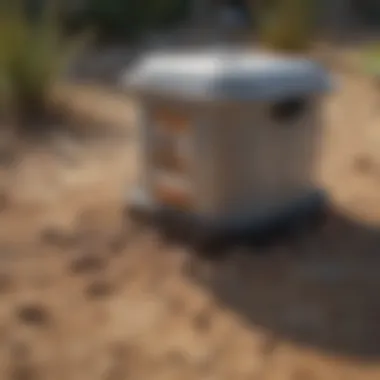

Visible damage inflicted by termites serves as a glaring indicator of an underlying infestation, necessitating prompt intervention. From hollow-sounding wood to drooping floors, the overt manifestations of termite activity underline the imperative nature of routine inspections. Recognizing and promptly addressing visible damage remains paramount in mitigating the structural harm wrought by these relentless pests.
Mud Tubes
The construction of mud tubes by termites represents a testament to their resourcefulness in establishing connectivity within their colonies. These distinctive structures signify an active termite presence and pinpoint potential entry points into homes. Vigilance towards identifying and sealing off these mud tubes stands as a linchpin in impeding the ingress of these destructive insects.
Discarded Wings
The presence of discarded wings in proximity to light sources serves as a telltale sign of termite swarming activity, especially during mating seasons. The meticulous observation of these delicate wings, shed post-mating rituals, presents an opportunity for homeowners to detect nascent infestations. Responding promptly to the discovery of discarded wings bolsters the efficacy of subsequent termite control measures.
Types of Termites
Subterranean Termites
Scurrying beneath the soil's surface, subterranean termites pose a serious threat to structural integrity due to their proclivity for tunneling through wooden foundations. Their subterranean lifestyle necessitates a multifaceted approach to eradicating and preventing invasions, emphasizing the importance of soil treatment and barrier installation.
Drywood Termites
Thriving within the timber framework, drywood termites showcase a penchant for feasting on exposed wood within homes. Elucidating their distinctive presence and feeding patterns underscores the necessity of localized treatments and persistent monitoring. Enhancing homeowners' knowledge of drywood termites facilitates targeted mitigation strategies to combat these resilient adversaries.
Dampwood Termites
Preferring moist, decaying wood as their abode, dampwood termites gravitate towards properties with high humidity levels and water damage. Identifying their habitat preferences accentuates the significance of rectifying moisture issues promptly for long-term termite prevention. Educating homeowners on the peculiarities of dampwood termites empowers proactive intervention to safeguard their residences effectively.
Preventive Measures
In the realm of termite protection, preventive measures stand as the crucial first line of defense against these silent destroyers. This section delves deep into the significance of preemptive actions to fortify your home against termite invasions. By embracing preventive measures, homeowners can proactively shield their properties from costly damages and structural compromises. Within this comprehensive guide, the meticulous exploration of preventive measures underscores their indispensable role in maintaining a termite-free household.
Home Maintenance
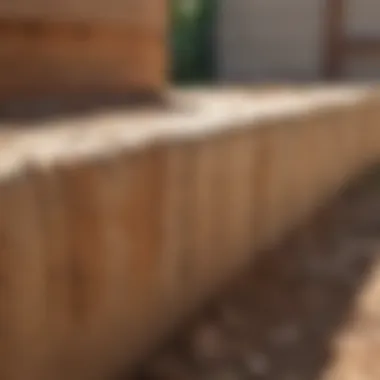

- Moisture Control: Moisture control emerges as a cornerstone of effective termite prevention strategies. By meticulously managing moisture levels within the home environment, individuals can create an unfavorable habitat for termites, deterring their settlement and proliferation. The essence of moisture control lies in its ability to eradicate termite-attractive conditions, fostering a dry and uninviting atmosphere for these destructive insects. Although demanding consistent vigilance, the benefits of moisture control in this article prove paramount in mitigating termite risks and preserving property integrity.
- Wood Inspection: Wood inspection plays a pivotal role in termite protection efforts, facilitating the early detection of potential infestations and vulnerabilities. Through regular and thorough inspections of wooden structures, homeowners can identify signs of termite activity and address issues promptly, averting extensive damages. The key characteristic of wood inspection lies in its proactive nature, enabling property owners to stay one step ahead of termites and safeguard their residences effectively. While highlighting any infestations or weaknesses, wood inspection equips individuals with the knowledge needed to make informed decisions for optimal termite management.
Landscaping Strategies
- Vegetation Distance: Managing the distance between vegetation and the home represents a fundamental landscaping strategy in termite protection. By maintaining adequate spacing between plants and the property, individuals reduce the likelihood of termite pathways and nesting sites near the structure. The key characteristic of vegetation distance lies in its capacity to create a barrier against termite intrusion, limiting direct access and potential entry points. Despite presenting some maintenance challenges, the advantages of implementing sufficient vegetation distance in this article outweigh the minimal efforts required to enhance long-term termite resistance.
- Mulching Practices: Mulching practices contribute significantly to termite prevention by influencing the environmental conditions termites find conducive. By selecting appropriate mulch types and applying them strategically, homeowners can create an inhospitable environment for termites, discouraging their presence. The unique feature of mulching practices lies in their dual functionality of promoting plant health while deterring termite activity, blending practicality with termite control benefits. Despite potential drawbacks such as mulch decomposition, the advantages of incorporating mulching practices in this article far outweigh the associated risks, offering a holistic approach to termite management.
Structural Modifications
- Ventilation Systems: Ventilation systems play a vital role in termite prevention by regulating moisture levels and air circulation within the property. Proper ventilation reduces excess humidity, making the environment less appealing to termites seeking damp habitats. The key characteristic of ventilation systems lies in their ability to create inhospitable conditions for termites, enhancing the overall resilience of the structure against infestations. While requiring initial investment and installation, the advantages of ventilation systems in this article translate into long-term termite protection and structural durability.
- Sealing Cracks: Sealing cracks serves as a proactive measure to fortify the home's defenses against termite intrusions. By closing off potential entry points and eliminating gaps in the building envelope, individuals can restrict termite accessibility and movement. The unique feature of sealing cracks lies in its direct impact on minimizing termite entry opportunities, strengthening the property's termite resistance profile. Despite the meticulous application process involved, the advantages of sealing cracks in this article offer heightened protection against termite incursions, underscoring its significance in comprehensive termite management.
DIY Treatment Options
When it comes to DIY treatment options for termite protection, this article delves into a plethora of methods aimed at safeguarding your property. Understanding these options is crucial for homeowners seeking effective strategies against termite infestations. By focusing on natural repellents, physical barriers, and chemical treatments, readers can gain valuable insights into protecting their homes comprehensively.
Natural Repellents
Boric Acid
Boric acid stands out as a key player in the realm of termite protection. Its potent properties make it a popular choice for combating these destructive pests. The unique feature of boric acid lies in its ability to disrupt the termite's digestive system, leading to their demise. While it is effective in eliminating termites, it is essential to handle it with care due to its toxic nature. Despite this drawback, boric acid remains a beneficial option for DIY termite treatment.
Orange Oil
Orange oil emerges as another promising natural repellent in the fight against termites. Its key characteristic lies in its strong scent, which is toxic to termites upon exposure. This makes it a popular choice for environmentally conscious homeowners seeking non-toxic solutions. However, its effectiveness may vary depending on the extent of infestation and the type of termites present. When used correctly, orange oil can serve as an advantageous tool in DIY termite protection strategies.
Physical Barriers
Metal Screens
Employing metal screens as physical barriers can help prevent termite intrusion into structures. Their key characteristic includes durability and sturdiness, making them an effective long-term solution. Metal screens act as a formidable obstacle for termites, hindering their access to vulnerable areas within a property. While they offer excellent protection, it is essential to ensure proper installation to maximize their efficacy.
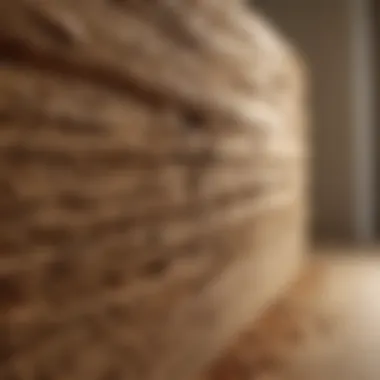

Plastic Sheeting
Plastic sheeting serves as a versatile physical barrier against termites, particularly in areas susceptible to moisture. Its key characteristic is flexibility, allowing for easy installation around foundations and crawl spaces. However, one must be cautious of tears or gaps that could compromise its effectiveness. Despite this, plastic sheeting remains a cost-effective and practical choice for DIY termite protection.
Chemical Treatments
Termite Sprays
Termite sprays play a significant role in eradicating termites swiftly and efficiently. Their key characteristic lies in their targeted application, allowing for precise treatment of infested areas. While termite sprays offer quick results, repeated applications may be necessary for complete elimination. It is imperative to follow safety guidelines during application to minimize exposure to harmful chemicals.
Foam Treatments
Foam treatments present a unique approach to termite extermination, effectively targeting hard-to-reach areas. Their key characteristic is expansion upon application, ensuring comprehensive coverage within walls and crevices. One advantage of foam treatments is their ability to penetrate deep into termite galleries, eradicating colonies at their core. However, professional expertise may be required for proper installation and optimal results.
Monitoring and Maintenance
In this holistic guide to DIY termite protection, the section on Monitoring and Maintenance plays a pivotal role in safeguarding your property from these destructive pests. Regular inspections are vital to detect termite activity early, preventing extensive damage to your home. By incorporating monitoring and maintenance practices, homeowners can proactively address termite issues, saving significant costs in the long run.
Regular Inspections
Checking Vulnerable Areas
Checking vulnerable areas is a crucial aspect of regular inspections as it targets potential entry points for termites. These areas include moisture-prone spots, wooden structures in contact with soil, and dark corners where termites thrive. By focusing on these vulnerable areas, homeowners can identify early signs of infestation and take timely action to mitigate the risks. The meticulous examination of vulnerable spots is a proactive measure to fortify your home's defenses against termite invasions.
Professional Inspections
Professional inspections bring an added layer of expertise and accuracy to termite detection. Certified inspectors use specialized tools and techniques to conduct thorough assessments of your property. Their in-depth knowledge allows them to pinpoint termite presence even in concealed areas, providing valuable insights for tailored treatment strategies. While professional inspections may involve additional costs, their precision and reliability offer peace of mind to homeowners seeking comprehensive protection against termites.
Post-Treatment Care
Following the implementation of termite treatments, post-treatment care holds significance in ensuring long-term defense against reinfestation. Monitoring termite activity involves regular checks to confirm the effectiveness of the applied treatments and detect any signs of termite resurgence. By actively monitoring termite activity, homeowners can intervene promptly at the first indication of infestation, preventing further damage and recurrence.
Addressing Issues Promptly
Addressing issues promptly underscores the importance of immediate action in response to detected termite activity. Whether it is observing new mud tubes or noticing wood damage, quick intervention is crucial. Prompt addressing of termite issues can limit the extent of damage, saving homeowners from costly repairs and structural harm. Acting swiftly in addressing termite problems is a proactive approach that minimizes the impact of infestations and preserves the integrity of your home.



